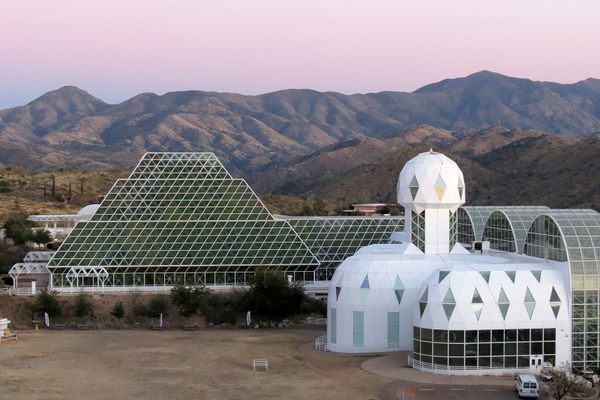The Mystery Beneath the ‘Honeycomb’ Patterns of Salt Deserts
After years of hypotheses that came up short, a physicist has finally found a solution.
From the Bonneville Salt Flats in Utah to the Salar de Uyuni in Bolivia, salt deserts around the world have become popular tourist destinations—vast, seemingly featureless, impossibly photogenic natural wonders. Although not all salt deserts are created the same, they appear to share a strange feature: what can be described as honeycomb-like patterns composed of low ridges emerging from the salty crust. The mechanism behind these mysterious polygons has had scientists scratching their heads for some time, with several hypotheses coming up short in providing a complete explanation for their ubiquity and regularity.
But now scientists seem closer to an answer. With researchers from Germany and England, Jana Lasser from the Institute of Interactive Systems and Data Science at Graz University of Technology (TU Graz) in Austria published a study in the journal Physical Review X showing how the flow of salty water under the surface is responsible for the mindbending patterns.
Salt deserts (also called salt flats or salt pans) form when a shallow, enclosed body of water evaporates in a place with little precipitation, such as a desert, leaving a flat surface of minerals behind, which can accumulate over thousands of years.

Lasser, a postdoctoral researcher at the TU Graz, was first introduced to salt deserts by her PhD supervisor Lucas Goehring, a physicist at Nottingham Trent University in England. “When he advertised the project, I became fascinated because during my bachelor’s and master’s I was doing theoretical physics programming, and I really wanted to explore the experimental side of physics,” she says. This project allowed her to actually go “see things in the wild.”
A couple hypotheses had been floated over the years about why these flat areas develop the crusty honeycomb shapes. One of them attributed the patterns to cracks that form as the ground surface dried. “The idea was that the surface would dry up and crack to relieve stress,” says Lasser. “And the mineral-rich water would well up in those cracks,” leaving ridges of salt crystals behind. A competing hypothesis posited that the edges of cracks might push upward to form the ridges.

But these two explanations don’t explain the uncannily consistent size of these patterns all over the world. “We see in the Death Valley [in California] or in the Chott el Djerid [in Tunisia] or in the Salar de Uyuni [in Bolivia] that these patterns always have a diameter of 1 to 2 meters [3 to 6 feet],” says Lasser. Lasser and the team discovered that the secret was lying under the crust.
Salt deserts aren’t as dry as their name suggests. “They’re actually completely filled with water,” says Lasser. “The groundwater reaches the surface and this water is moving and constantly evaporating through the surface.” As the salt water evaporates, a more mineral-rich layer builds up below the crust, and since it is heavier than the less salty water welling up from below, it begins to flow back below in “downwelling plumes,” Lasser says, around the water that rises to replace it. It is these circulating plumes, convection cells similar to what happens in radiators but driven by salinity rather than heat, that create the regular ridges. “What we see on the surface are the edges of the convection cells that sit in the underground,” Lasser says. The constant turnover of salty and fresh water beneath the surface seems to be a universal property of all salt deserts.

The research team had initially wanted to grow artificial patterns in the lab, but the experiment turned out to be hard to control. They opted instead for a heavy-duty simulation. “If you want to simulate the full thing in three dimensions, you just have a lot of computations to do,” Lasser says.
For Lasser, this study felt like the purest form of research—trying to understand something about the world without having an immediate application in mind. “When you go out there to Death Valley and you stand in the middle of these patterns, you immediately realize that something is going on here, ” says Lasser. “Being able to do this purely curiosity-driven research was a very, very satisfying experience.”





















Follow us on Twitter to get the latest on the world's hidden wonders.
Like us on Facebook to get the latest on the world's hidden wonders.
Follow us on Twitter Like us on Facebook